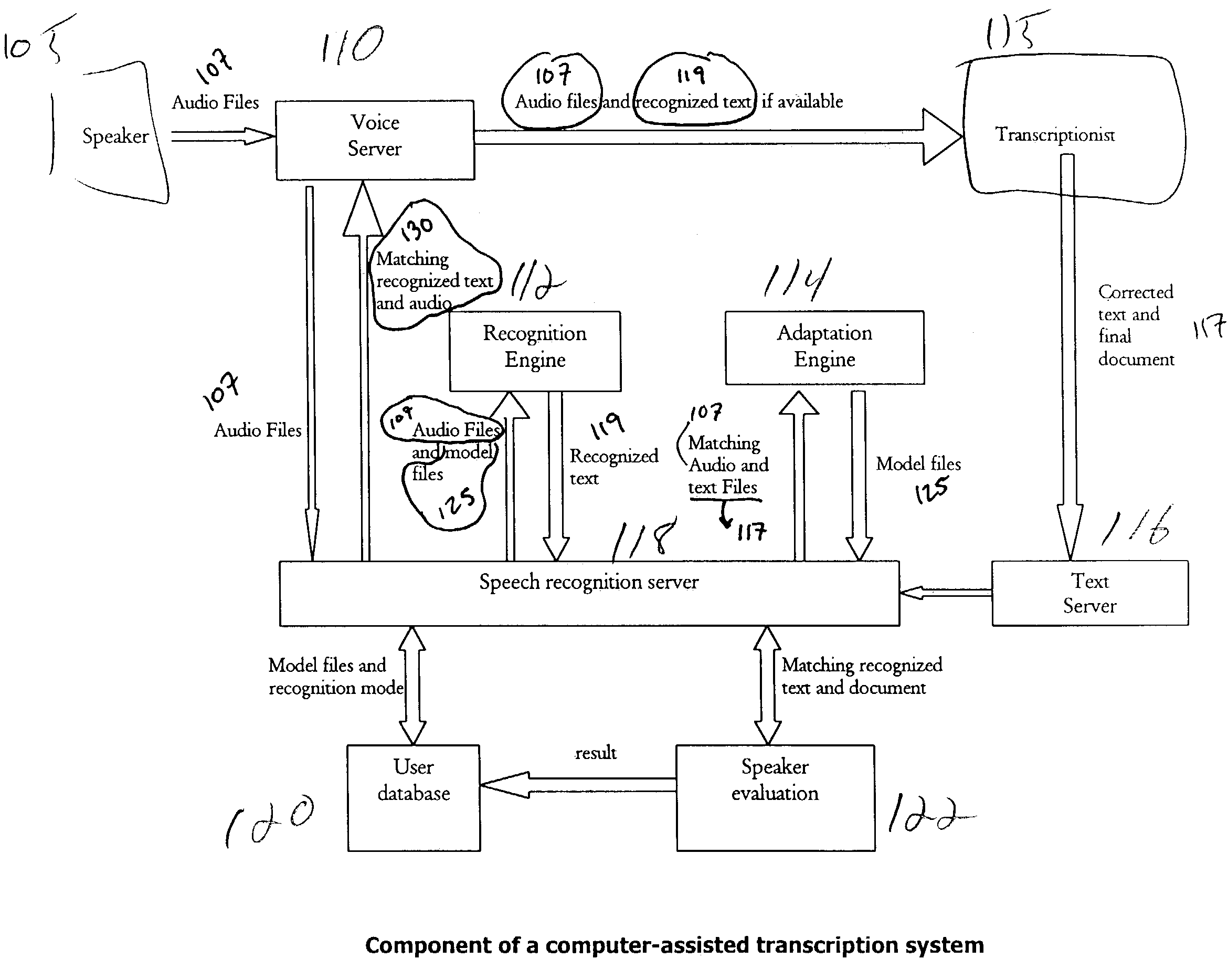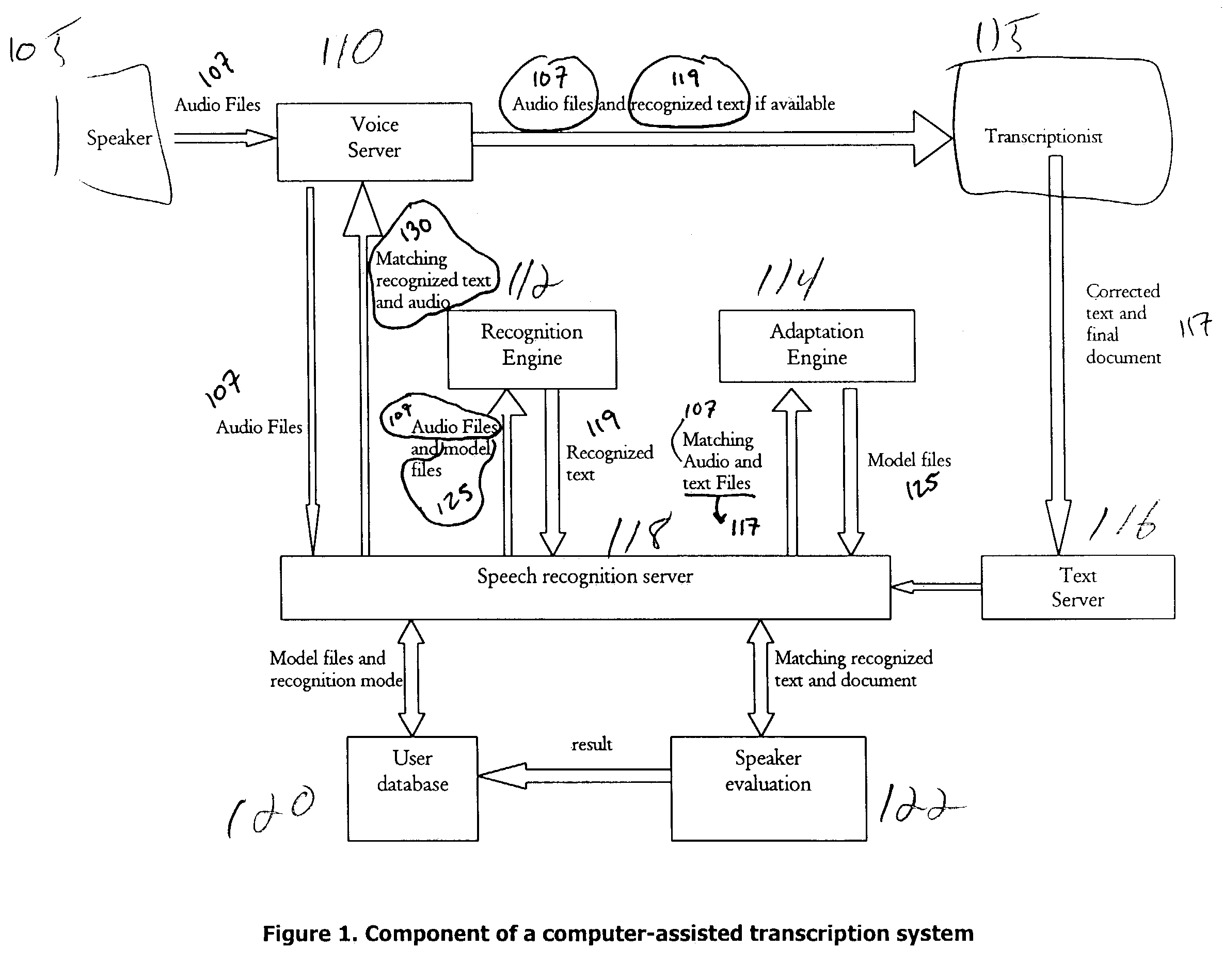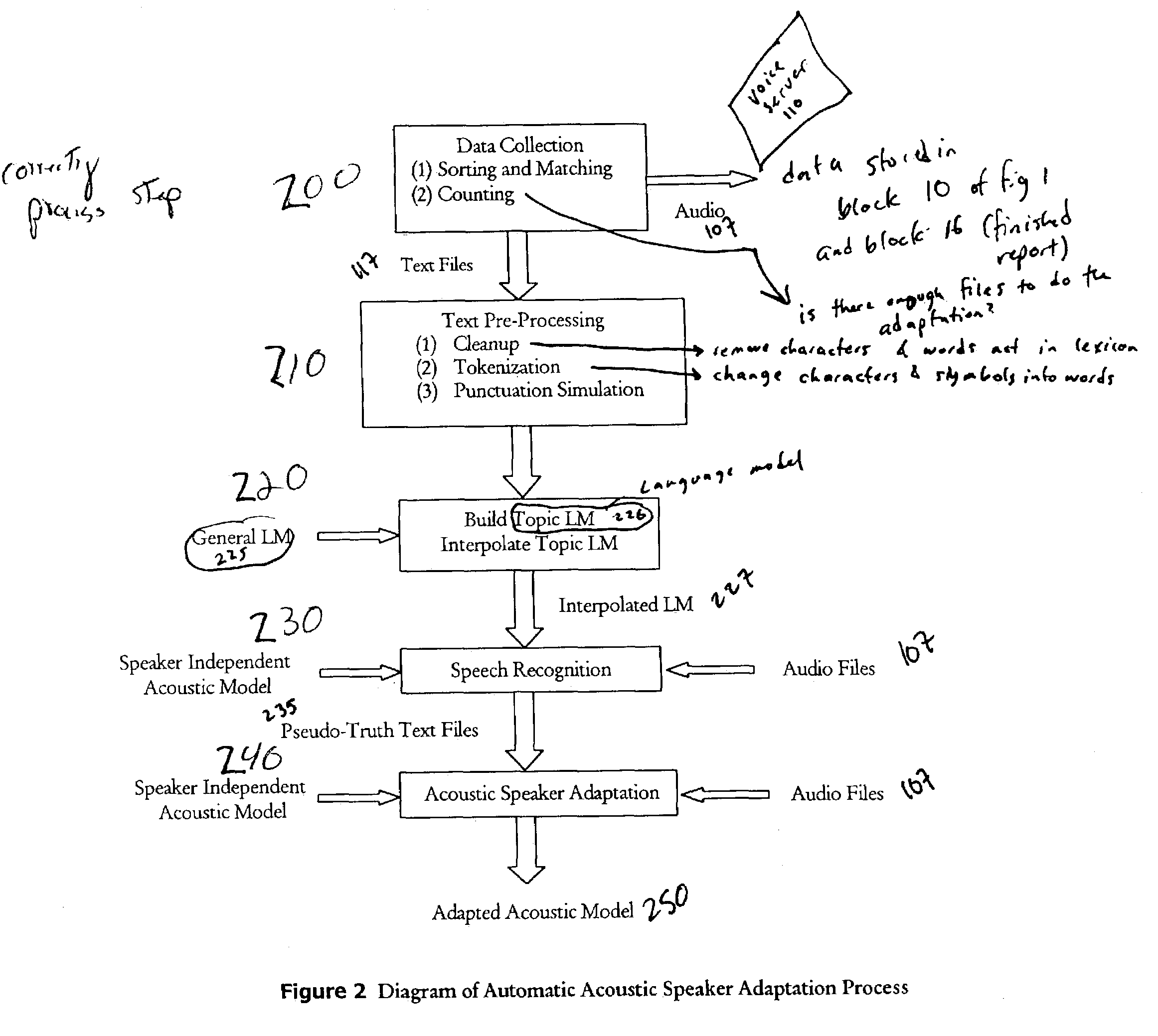Systems and methods for automatic acoustic speaker adaptation in computer-assisted transcription systems
a technology transcription system, applied in the field of automatic acoustic speaker adaptation, can solve the problems of unreliable speech recognition, wasting more time than it saves, and speaker independent acoustic models are usually substantially less accurate than and achieve the effect of improving the accuracy of speaker dependent acoustic models
- Summary
- Abstract
- Description
- Claims
- Application Information
AI Technical Summary
Benefits of technology
Problems solved by technology
Method used
Image
Examples
Embodiment Construction
[0022]In one aspect, the invention includes a method for unsupervised acoustic adaptation. At least one audio file, the first audio file, may be associated with a partial transcript of the audio file. The first audio file and its associated partial transcript may be collected from a server used to store audio files. The stored audio files may be labeled according to the identity of the speakers who generated the files, or possibly also by other identifying information such as date and time the files were generated or a title or topic of the subject of the audio file, for example. A topic language model may be built from the partial transcript using any method known to those in the art, for example by a statistical analysis of n-gram word probabilities. Preferably, a topic language model is constructed by statistical analysis of the trigram word probabilities in the partial transcript. The topic language model may then be interpolated with a general language model, which can be any p...
PUM
 Login to View More
Login to View More Abstract
Description
Claims
Application Information
 Login to View More
Login to View More - R&D
- Intellectual Property
- Life Sciences
- Materials
- Tech Scout
- Unparalleled Data Quality
- Higher Quality Content
- 60% Fewer Hallucinations
Browse by: Latest US Patents, China's latest patents, Technical Efficacy Thesaurus, Application Domain, Technology Topic, Popular Technical Reports.
© 2025 PatSnap. All rights reserved.Legal|Privacy policy|Modern Slavery Act Transparency Statement|Sitemap|About US| Contact US: help@patsnap.com



